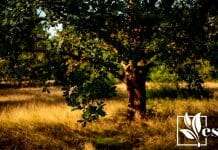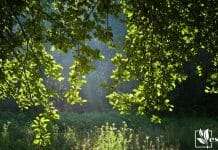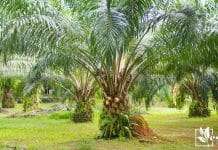- When to Plant Eggplant in NC: Essential Timing Tips for Gardeners - October 2, 2024
- When to Plant Pumpkins in Eastern NC: Optimal Timing for a Bountiful Harvest - October 2, 2024
- When to Plant in South Carolina: Essential Timing for Garden Success - October 2, 2024
Trees with blue leaves include several species of Cedars, Firs, Pines, and Junipers. Are blue trees real? Are blue leaves real? In nature, no trees are blue entirely or possess purely blue leaves.
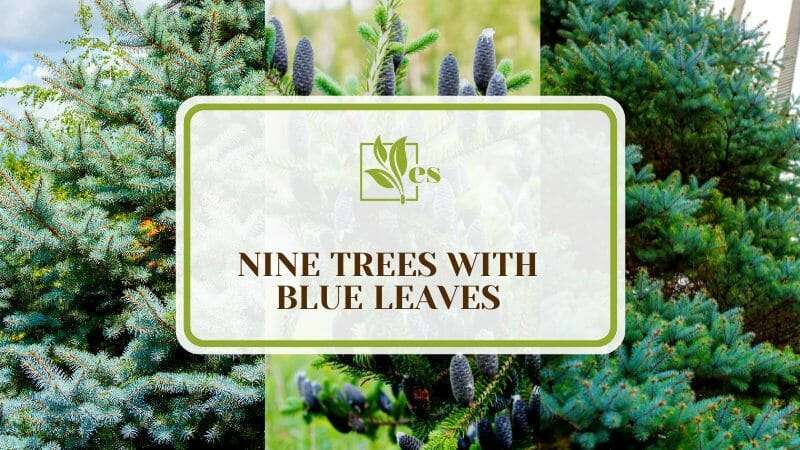
The appearance of blue leaves disappears upon close and honest inspection. The blue leaves are shades of gray or blue or the result of a transient color change. Read through this article and you will find each tree and its uniqueness arranged one after the other.
JUMP TO TOPIC
A List of Trees With Blue Leaves
Cedars, Cypresses, Firs, and Spruces are trees with several species that possess leaves that appear blue. If you stay in a cold and windy environment, Firs would be the go-to choice.
A Cypress would be the better option if you’re looking for resilience to heat. Whether you’re just interested in blue-leaf trees or you want to incorporate them into your landscape, all of them have blue leaves, that is what makes them unique.
1. The Blue Atlas Cedar Tree
The blue atlas cedar, Cedrus atlantica ‘Glauca,’ is a dwarf tree home to several regions in North, Central, and South America. The Blue Atlas Cedar tree is characterized by its bluish-grey pines that occasionally turn red during the Fall, a beautiful spectacle to behold.
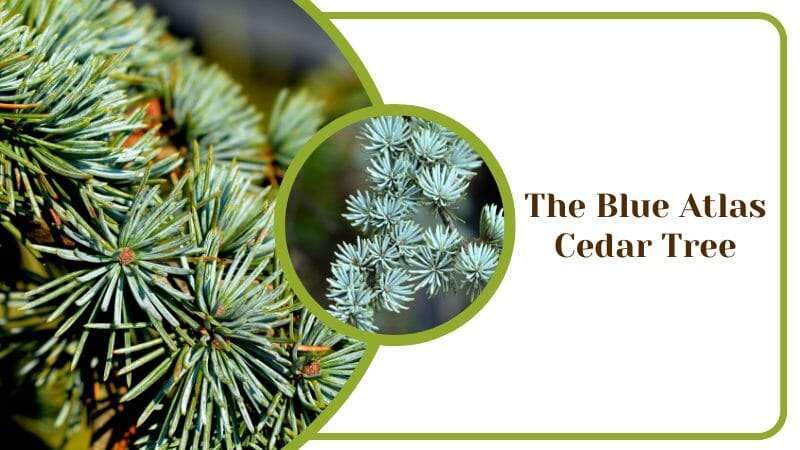
When growing them, you should know that they are easy to grow and stand out magnificently in an array of landscapes.
The Blue Cedar tree is a fantastic option if you want a vibrant front yard. However, if you own a round piece in your front yard, planting a blue atlas cedar in it greatly increases its aesthetics and adds to the uniqueness of your landscape. They offer added beauty to fountains, accent lights, and even Christmas lights.
The Blue Atlas Cedar thrives under full sunlight and well-drained soil. They exceptionally flourish in zone 6 and can grow as much as 15 feet in height. Typically, regions with moderate rainfall are ideal for the early years of growth.
If your home or the region where you live has little or excessive rainfall, consider buying trees above three years, so that it would show you its vibrant blue foliage.
However, they are hardy and can survive mild to moderate periods of drought once established in age. Whether as the center of attraction or as additions to increase the aesthetics in your compound, blue atlas cedar trees are a great way to bring vibrancy to your landscape.
2. The Arizona Cypress ‘Blue Ice’ Tree
The Arizona Cypress, Cupressus arizonica, is a name given to a group of different Cypress species native to Mexico and the Southwestern parts of the United States. They can become quite large, capable of reaching heights just shy of 85 feet. The Arizona Cypress ‘blue ice,’ Cupressus arizonica var. glabra, is the variant you’re interested in.
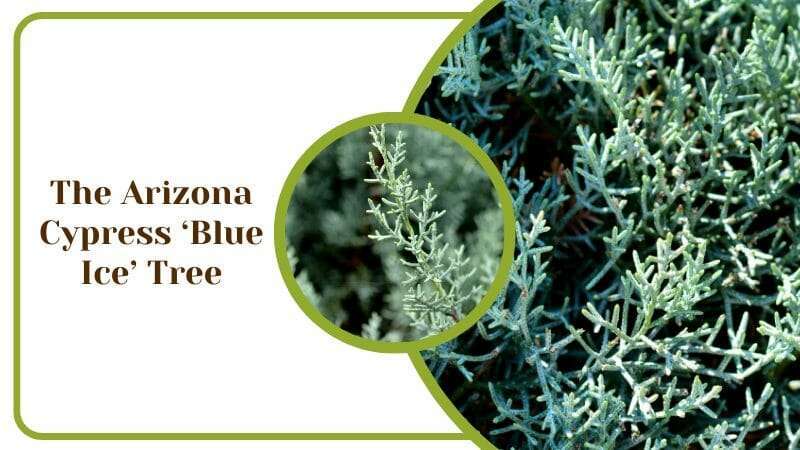
This blue-leaf tree has a cone shape, and the leaves give off a frosty blue color, like blue pine tree species during winter. One could say it resembles a tree with a white Christmas theme. The Arizona Cypress ‘Blue Ice’ grows in areas with abundant sunlight and well-drained soils, similar to features that favor pine trees.
They are hardy, like many Cypress trees, and can survive mild to moderate droughts once established, even stretching toward harsh droughts. They may seem to die during extremely harsh conditions but always bounce back once the rain comes back.
Regarding the tree’s height, nutrition, soil type, and environment have a big part to play. On average, the Arizona Cypress ‘blue ice’ is similar to regular Christmas trees in size.
However, some reports claim that the Arizona blue ice may reach sizes as high as 50 feet. Nonetheless, in most homes, they reach heights between 15 to 25 feet and just stay there with their amazing color.
3. The Boulevard Cypress Tree
The Boulevard Cypress, Chamaecyparis pisifera, is also called Boulevard false cypress or blue moss cypress. Similar to the Cypress in general, they are a tough and resilient lot.
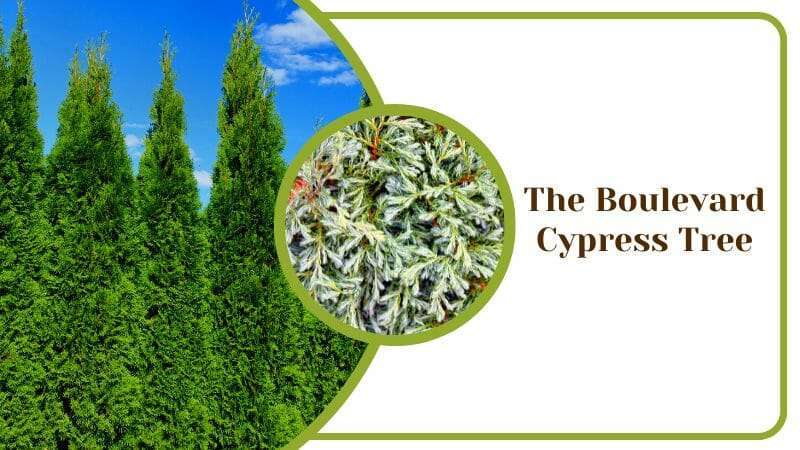
The Boulevard Cypress is a semi-dwarf tree known for its soft blue-green foliage and cone-shaped structure.
It grows to a decent height of about 12 to 15 feet, perfect for owners who love modest trees. The Boulevard would happily thrive in well-drained soil and can tolerate both cold and hot climates, as far as they are not extremes of either.
For residents living in areas occupied with wildlife, like most Cypress, the boulevard is often untouched by Deer. They thrive in zones four to eight, making them a favorite to many parts of the United States.
One feature homeowners love is the somewhat ‘malleable’ nature of the boulevard cypress. They grow in a cone shape but can easily be pruned to whatever form and height are desired. Nonetheless, it allows them to become personalized to fit each owner’s specific desire.
In addition to all the features mentioned, the Boulevard is an evergreen tree with red barks occasionally. It makes them an easy choice for people looking to have one color throughout the year. All merits put together, if you love modest and personalized trees, the Boulevard Cyprus is an excellent blue-leaf tree to have in a compound.
4. The Sawara Cypress Tree
The Sawara cypress belongs to the same group as the boulevard cypress, the false cypress. Although they are often confused with the Boulevard Cypress or the golden mop cypress, they are a distinct species that possesses blue leaves, which is why they are one of the trees that are blue. The critical difference between both is their potential size and foliage.
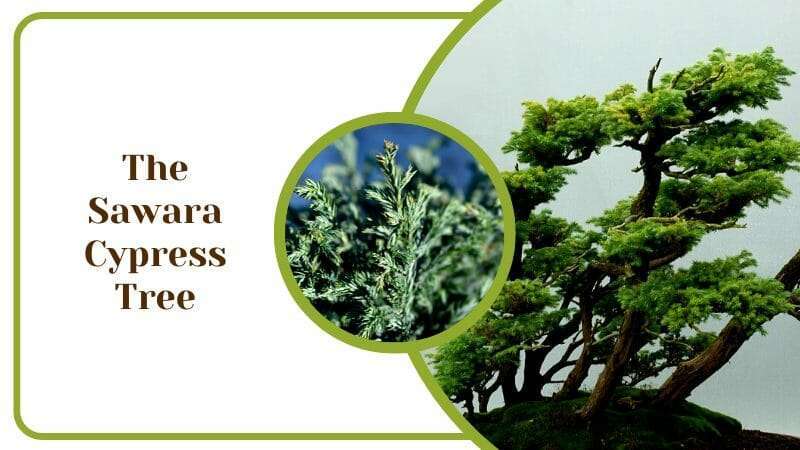
While the Boulevard Cypress typically doesn’t exceed 15 feet, although up to 26 feet, and there has been recorded evidence.
This tree has soft foliage, the Sawara Cypress has relatively hard foliage and can attain heights above 100 feet in nature. Though modest and ‘tame’ in many homes where they are employed, the Sawara Cypress is a tough and wild blue-leaf tree at heart.
The good news is that this beautiful tree can be grown the same way the Boulevard Cypress is. It means that they can be pruned to a desired height and shape, however, you must be aware not to harm the beautiful tree’s leaves by harsh pruning.
Furthermore, they grow relatively slowly, allowing pruning to be an easy process. If you want a tree that stands out after many generations, the Sawara Cypress is a great pick.
5. The Tyler Blue Balsam Fir Tree
Firs, also called Abies, are evergreen trees found in North America, Asia, Africa, and Europe. The Tyler Blue Balsam Fir, Albies balsamea, are pyramidal trees known for their blue-green foliage with a touch of white. It’s a coniferous tree that thrives in zone three and enjoys the full sun. Nonetheless, the partial sun is still perfect.
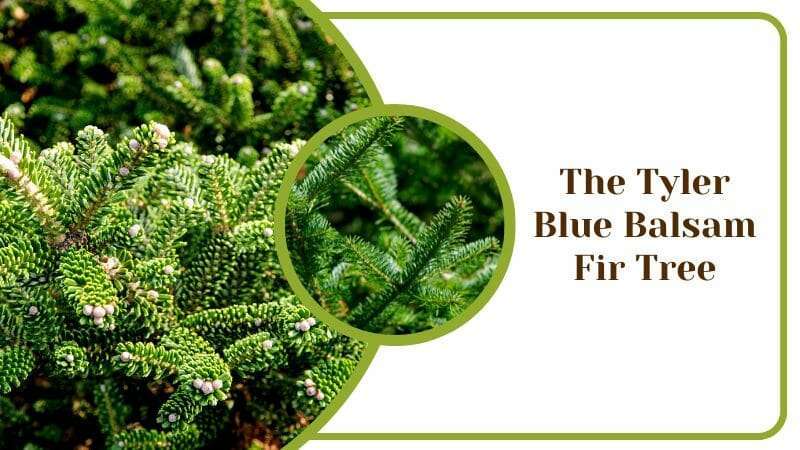
While the Balsam Fir boasts up to 50 feet, our modest Tyler blue variant stays below 25 feet. most of the time, a contrast to some Firs capable of reaching 200 feet in height. They love rich organic soil that’s well drained, although once established, these trees would do just fine with moderately drained soil.
With soft needle-like foliage, the Tyler blue is an awesome blue-leaf tree to grow in a yard. While they generally thrive once established, it should be noted that the Tyler Blue Balsam Fir doesn’t do well with extremes of heat or cold and water-clogged soil.
6. The Blue Douglas Fir Tree
The Blue Douglas Fir, Pseudotsuga menziesii ‘blue,’ is colloquially known as the Rocky Mountain Douglas Fir, particularly because of its natural habitat in deep mountains.
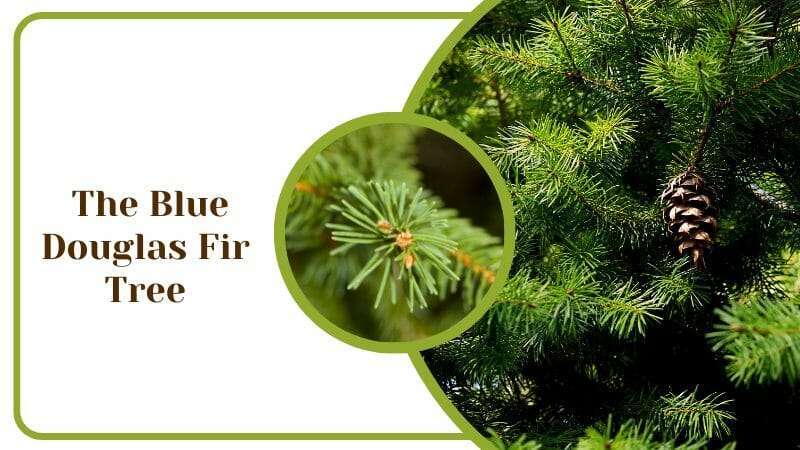
What is unique about this plant is that in order to keep its leaves blue, they enjoy full sunlight and well-drained soil, properties that trees in the mountains need to grow majestically.
The Blue Douglas Fir is a slow-growing tree that can reach heights between 40 to 60 feet. The Rocky Mountain Douglas fir has blue-green foliage that tends more toward blue as it ages; a feature that favors older trees and bugs owners of younger trees.
They are hardy and can resist cold and hot climates, although they tend to be more suited for the harshest of cold.
If you stay in a cold region, the Blue Douglas would be perfect for your backyard, or even on the side of the entrance way to your house.
They resist the wind and extremes of cold while gracefully maintaining their blue luster. A spectacle that’s dazzling to behold in the winter. In fact, some homeowners use the Blue Douglas Fir as windbreakers in cold regions susceptible to the hazards of strong wind.
For people who love the idea of cottage homes built somewhere in the mountains, the Blue Douglas Fir is a great option to go with. In addition, for habitants who are already staying in mountainous or cold regions, these trees with blue foliage are simply the best ones that one could have.
7. The Blue Spruce Tree
When talking about trees with blue leaves, the Blue Spruce is arguably one of the most popular, and for a good reason. The Blue Spruce, Picea pungens, has several colloquial names; Green spruce, Colorado blue spruce, or even for some people, Colorado spruce.
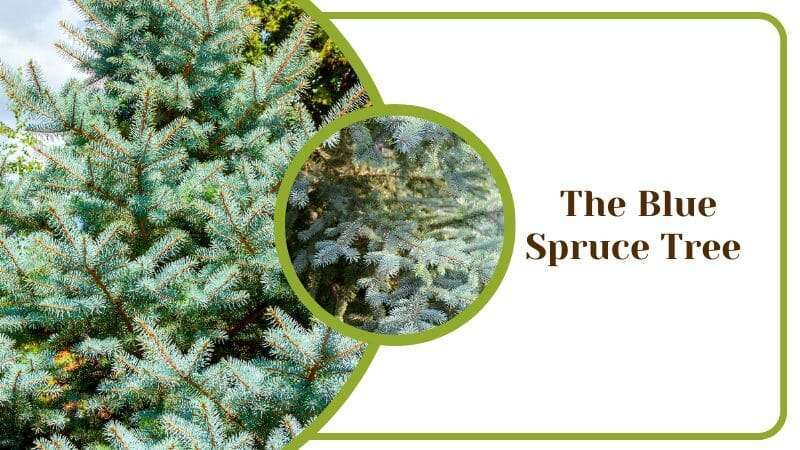 The blue spruce trees grow easily in zones 1 to 7 and are tough trees. One key thing that you should know is that they are resilient to droughts and colds and survive almost any soil. Of course, in terms of preference, they love slightly colder and humid climates with well-drained soil.
The blue spruce trees grow easily in zones 1 to 7 and are tough trees. One key thing that you should know is that they are resilient to droughts and colds and survive almost any soil. Of course, in terms of preference, they love slightly colder and humid climates with well-drained soil.
These magnificent conifer trees love to grow and don’t do well with excessive pruning. They naturally take a pyramidal shape, reaching as high as 70 feet in the wild. They love to bask in the sunlight but can survive in partial shades.
What’s more to this beloved tree? The pines are medicinal and known to treat stomach and rheumatic pains. In their old age, its wood is very resourceful and valuable if you want to sell them.
Although native to only a few states in the United States, the Blue Spruce has become a widespread tree across many states. From homes to parks and gardens, even becoming the state tree of Colorado, the blue spruce is possibly the most famous blue-leafed tree.
8. The Juniper ‘Wichita Blue’ Tree
The Juniper ‘Wichita Blue’ Tree also known as the Juniperus scopulorum, is a robust juniper that sits at home in growing zones 3 to 7.
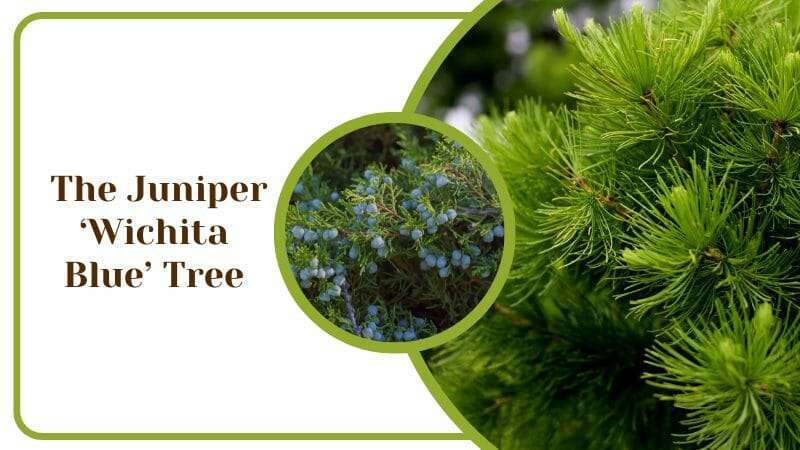
The Juniper ‘Wichita Blue’ tree is also known as the Rocky Mountain Juniper because of its natural habitat in deep mountains, very similar to the Rocky Mountain Douglas Fir.
Apart from one being a Juniper and the other a Fir, the significant difference is the height. Both trees share similar foliage, colors, and weather preferences, in addition to serving as excellent wind-breakers.
The Rocky Mountain Juniper grows to a height of 15 feet in most homes, stretching to 30 feet with age and space, knowing that they grow and thrive with their rich color being kept vibrant. It enjoys full sunlight and well-drained soil but easily adapts to a wide range of soil types; loamy, clay, dry, and even rocky soil.
The leaves maintain a blue-silver color throughout the year and thrive on well-aerated soil. They hate water-logged soil and do not need fertilizers in good habitats. In fact, excessive fertilization makes them susceptible to Phomopsis.
If you’re a lover of Junipers, and stay in a cold and rocky region, the Wichita Blue is easily the best pick. The ever-green silver-blue foliage takes a natural pine shape as it grows, requiring little to no pruning, as when it comes to excessive pruning, it may harm the tree and its health. Overall, it is easy to maintain, being a tough tree that is resilient in harsh conditions.
9. The Purple Willow
The Purple Willow, Salix purpurea, is a controversial addition but one that deserves a spot in our list of blue-leaf trees. The purple willow requires little maintenance and is highly tolerant to printing, several soil types, and several climate conditions.
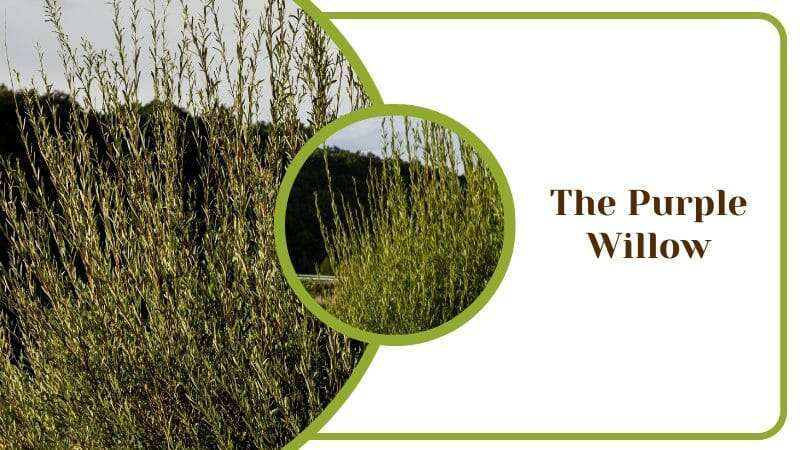
The Purple Willow, though a shrub, can also be called a small tree. It grows between 10 to 15 feet. in height, with leaves that change with the seasons. Although the leaves are blue-green, they transition from being predominantly green in Spring to mostly blue as the year ends.
Their easy-to-maintain nature, versatile use, and beautiful blue leaves gradually appearing as the year progresses make them a worthy addition to any landscape. In addition, they would elevate the beauty and the significance of the garden.

